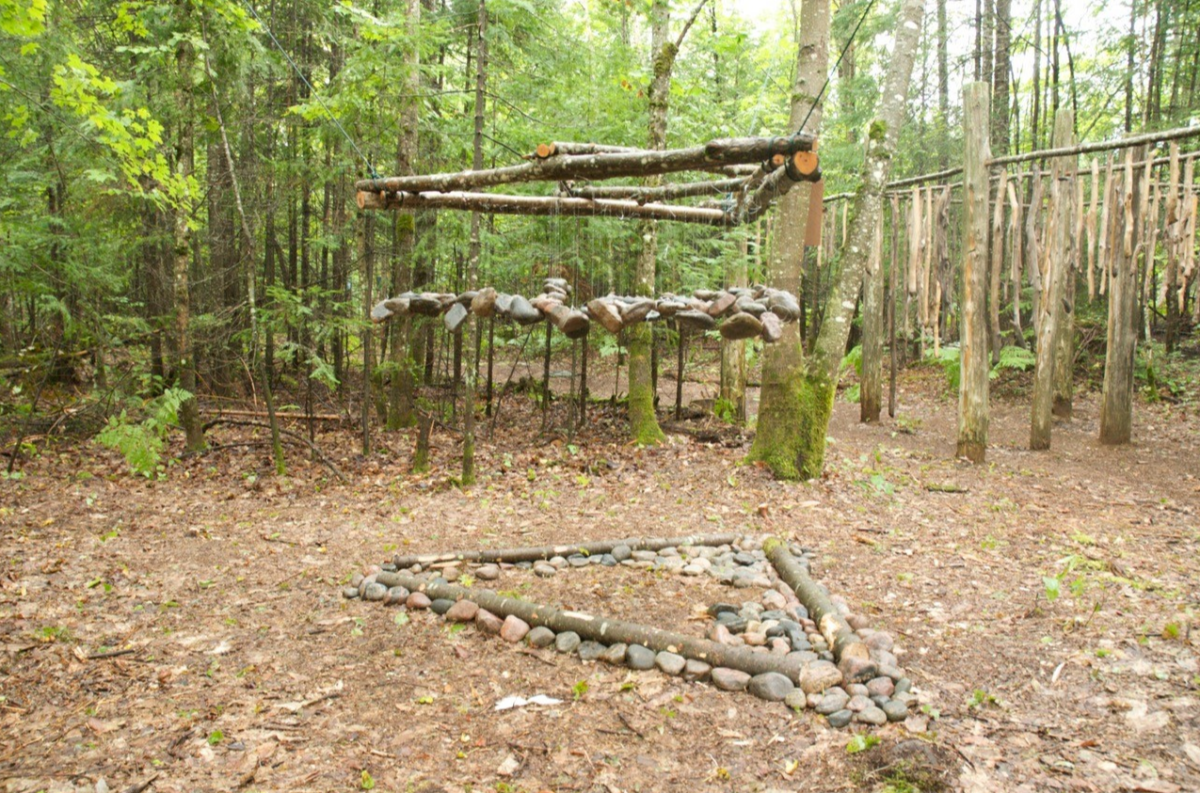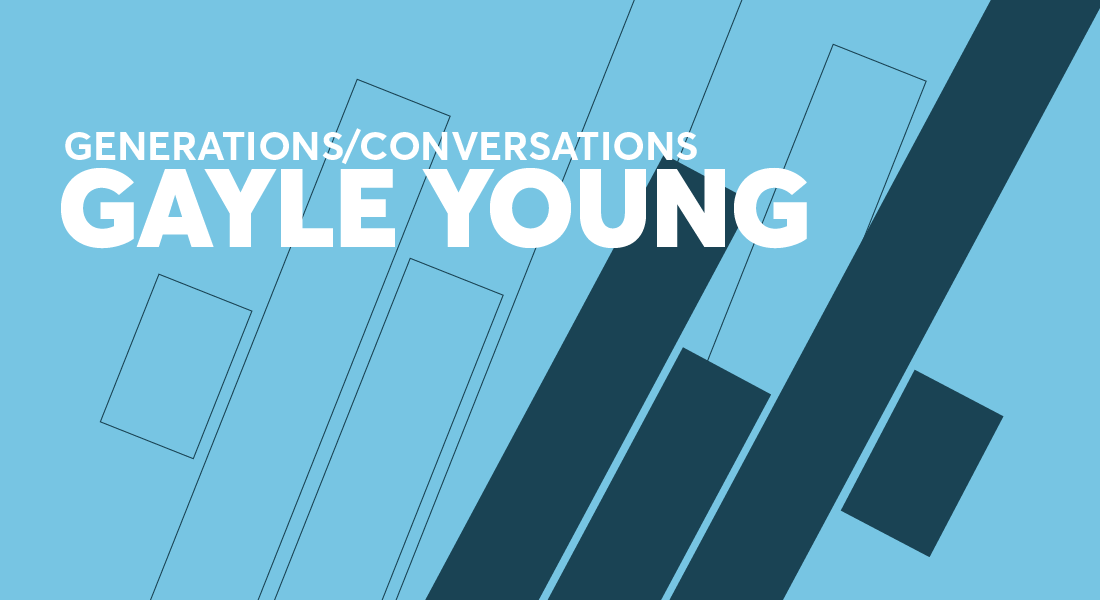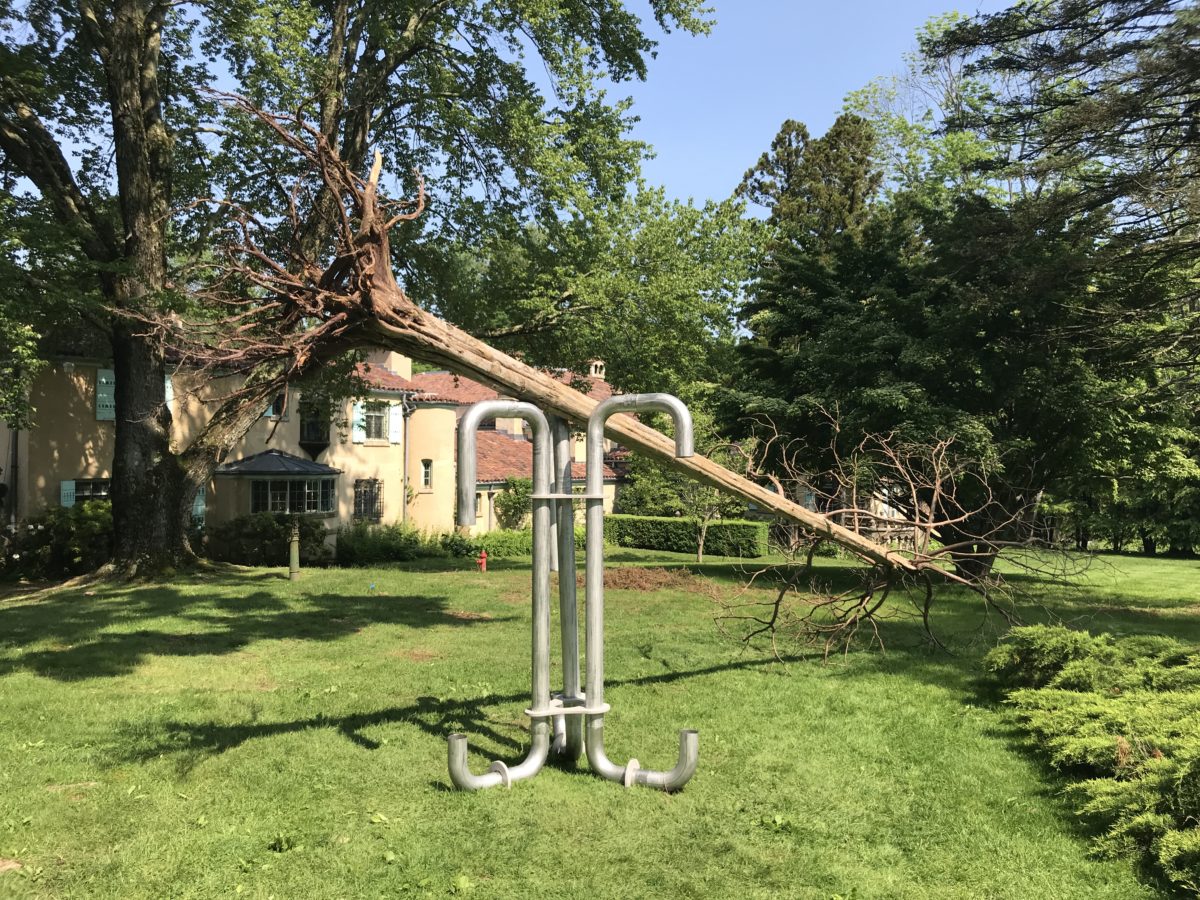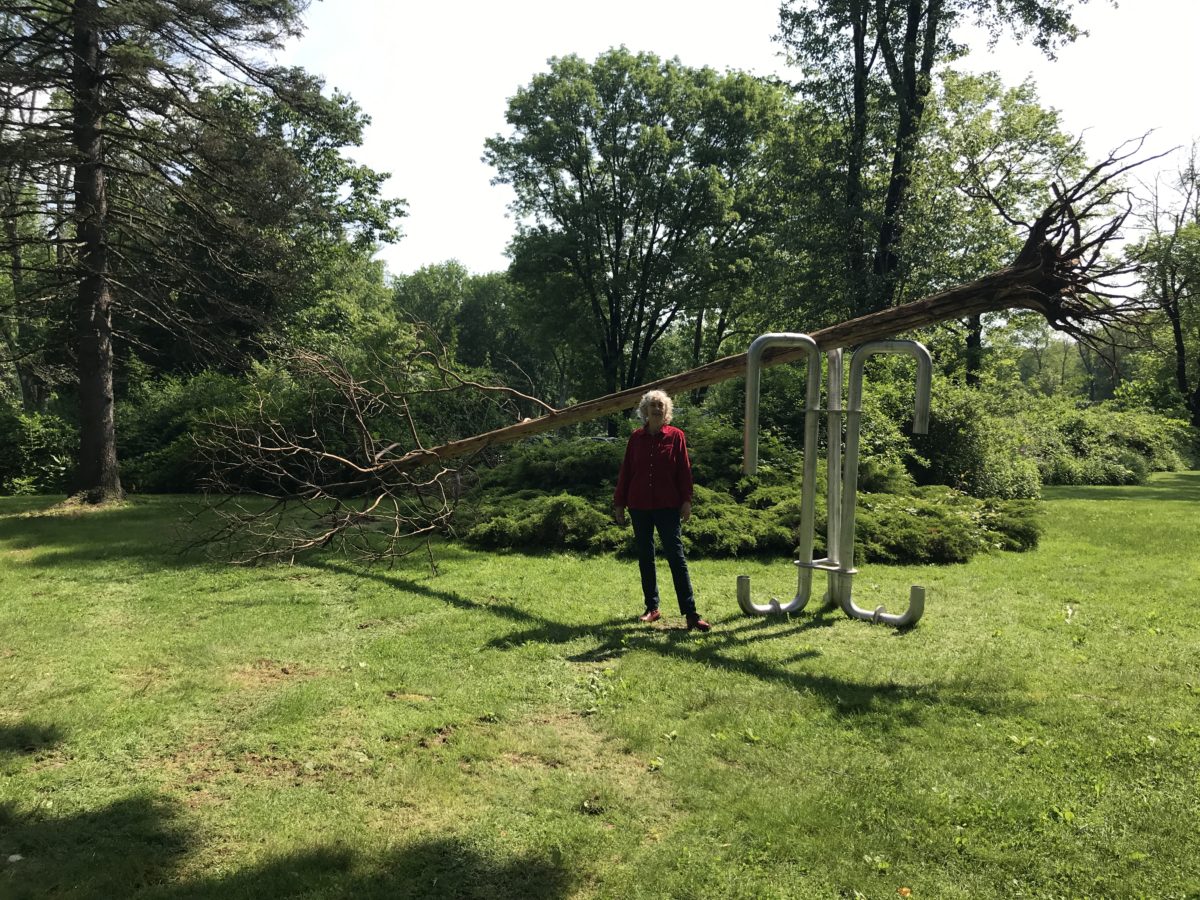Part 5 / Sound Installations
This is the fifth excerpt in a six-part series that explores Gayle Young’s musical practice, drawn from the interview that took place with Camille Kiku Belair on December 14th, 2017 at the Canadian Music Centre in Toronto.
In the mid-1970s as a music student at York University Gayle Young began constructing a microtonal percussion instrument she later named Columbine (after a wildflower). She chose pitches based on just intonation ratios (fractions) using only multiples of the prime numbers 2, 3 and 5, and designed a notation system using coloured and shaped note-heads. Her Amaranth is a 24-stringed zither that can be tuned by moving the bridges under each string.
In this excerpt we learn more about Gayle’s considerations of the listener/audience as participant in her pieces.
CB: How were your early concerts with the Amaranth and Columbine received?
GY: I was very gratified by the response. One of my students in automobile maintenance class worked at CBC, and included my first concert in the on-air event announcements, so I had a full house – though there was an ice storm that night. That was certainly encouraging. After that I was invited to perform through Ontario and Quebec, and I did a tour to Eastern Canada in 1981, the first time I played in Newfoundland.
CB: Do you find your audiences have been open to unfamiliar music?
GY: Audiences seemed to find my concerts engaging, perhaps because I was there in person so they could ask questions, and begin to develop a sense of rapport. I always spoke about the instruments, and described what I intended in each piece. It was a great way to engage directly with audiences. We all know that people are often uncomfortable with exploratory music, and I wanted to address this on a larger scale by providing a listening context. I thought that if listeners were familiar with early pieces by composers like Hugh le Caine they would be eager to hear more recent electronic music. That’s one reason why I began researching and writing about Hugh Le Caine’s electronic music inventions, and after that editing Musicworks for over twenty years.
I was fascinated by the stories that emerged during the research for the Le Caine biography, and by the intentions and challenges that composers talked about in Musicworks articles. Underlying both of these writing projects was my hope that by sharing the stories they would open a window for the public, invite listeners to engage with the amazing, and to me exciting, history of creative music and sound.
CB: Did it turn out the way you hoped?
GY: After a while I realized that it’s a long-term process, with many influences far beyond anything I might do. For, instance David Jaeger’s radio show, Two New Hours, on CBC, recorded and broadcast new pieces of music and interviewed composers from all around the world. There were excellent explanations of the pieces, each show was a high-level production. But it was broadcast on Sunday nights and did not reach most listeners. Contemporary music was usually slotted into special programmes on radio, and my concerts slotted into small art galleries, so the new stuff was not integrated into the culture. This is likely because listeners by and large feel intimidated, and tend to dis-engage, turn the radio off.
CB: Did you address this in your own work?
GY: I’ve done a series of public sound installations that are intended, in part, to invite the public to explore the nature of sound, in a setting where participants can feel a sense of play rather than feeling uncomfortable because they might be doing something wrong. [We talked about some of these in section four of this series.] Many of these were built in collaboration with visual artist Reinhard Reitzenstein. In the first installations, tuned resonators were mounted in outdoor environments where people could listen through the resonators to some kind of noise, making up their own melodies from the sounds of the highway or the waterfall, since each resonator gave a different pitch.
In the early 1990s we did two-dimensional long-string installations, for an installation called Klang Bau. Three or four Y-shaped string matrices, with each set of strings attached at three points, and each with a large wooden resonator, were tuned and measured to fit a specific space. The strings produce lots of harmonic and inharmonic overtones, so the sound is rather complex. People are invited to play them with bows and percussion mallets but in general there are no rules about how to play them. No reason for anyone to feel intimidated. Lots of people played the things for a long time, one player completely shredding the bow. I’ve also worked with found objects, logs, resonant stones, sticks, things that anybody can pick up on a beach and play with, to explore sound.

Caption: Gayle Young’s RockenSpeil, the suspended stones are activated by wind or by people moving the triangular frame.
CB: Do you think there’s any progression from your early instrument building to your work with found objects?
GY: Yes, making things, I suppose… Installation pieces offer ways to open up the field of sound exploration beyond the technical and professional. The arithmetical concerns related to tuning take a back seat and an approach motivated by curiosity comes to the foreground. Found objects usually have more complex combinations of frequencies, even a stone or stick is complicated – far more complex than a vibraphone bar. Found objects direct our attention to texture, away from single frequencies, even when you can hear a tone and form a melody.
CB: How did you begin to incorporate natural sounds into your music? One of your electroacoustic pieces consisted solely of sampled water splashes. Was that separate from your work with microtonality?
GY: Yes, that was also in the early 1990s, and it was separate from my music that explores tuning until I began recording sounds through the tuned resonators ten years later, editing and combining the sounds and playing them back in concerts, accompanied by instruments. I think of the recordings as found sounds, like a stick or a stone.
CB: How did that transition end up happening?
GY: One summer morning on a camping holiday I noticed the sound of water splashing against shoreline rocks first thing in the morning. It seemed to have both rhythm and melody, and I decided to record it. I’d heard music by Barry Traux, Hildegard Westerkamp, R. Murray Schafer, and I had a sense very early on that the environment was part of our musical experience.
CB: Was it through having access to other technology?
GY: No, I’d had a good-quality tape recorder for quite a while – a battery-operated portable cassette machine. It was really a matter of listening at that time and place.
CB: With your tuned resonator installations people could make their own melodies and interact with the art. Is that something that you are interested in – creating specific spaces for sound other than the usual concert hall context?
GY: We talked a bit about my text-based pieces last time, notated compositions intended for concert settings where I invite musicians to create aspects of the sound through imaginary listening. And it’s OK to play these pieces slowly, so that makes them available for amateur musicians, a way for non-professional musicians to explore sound at home. I’ve played performances in the installations, too, so the boundary between concert hall and other options gets blurred sometimes.
I like my concerts to be informal, I like to explain the challenges I found and how I dealt with them, so listeners get a sense of where it all came from. Most people have heard very little contemporary music, they are unfamiliar with key pieces written a hundred years ago, and as time goes on it’s harder to close the gap. If they’ve never heard the electronic music from the 1950s and 1960s or dozens of other examples of music that haven’t been heard by the general public, how can you invite them to parachute to 2020 and feel enthusiasm for what they hear? Trying to ‘educate’ listeners would likely just make them uncomfortable. I want to invite people to listen, invite people to create their own understandings of what they hear. I like to imagine that there are ways to reach out to a person who is just curious and not an expert and have them say “ah, this is an interesting sound!”
Caption: Tonally Inclined was installed at Caramoor Center for Music and the Arts, in southern New York State, over the summer of 2019. Three resonators, supported by an inverted tree, are tuned to pitches of the Bohlen Pierce scale. The resonance of the surrounding environment can be heard through the metal resonators.
CB: In your work there is less of a distinction between sound installations, sound art, and works for the concert stage.
GY: All of these art forms are united by the importance of listening. Pauline Oliveros has written extensively about this, observing and describing her own experiences of listening in considerable detail. Soon after her mother gave her a tape recorder she recorded sound from the window of their home, and then noticed differences between what she heard when the recording was played back and what she recalled hearing while she was recording. For her this was an opportunity to gain insight into the listening process. Everyone’s listening is different, our attention goes in different directions, and our responses are unique.
I perform on the installation pieces but what other people play on them is usually very different. I suppose it depends partly on how shy they are feeling. I let people play the instruments I built, too, and they usually find sounds that grab their attention. There is a sense of exploring what you can do, and in the case of the suspended beaver-chewed sticks, you can bash them with things that you wouldn’t bring anywhere near a valuable musical instrument. The stuff is not precious.
The final installment in the Generations/Conversations interview with Gayle Young will be up next week!





